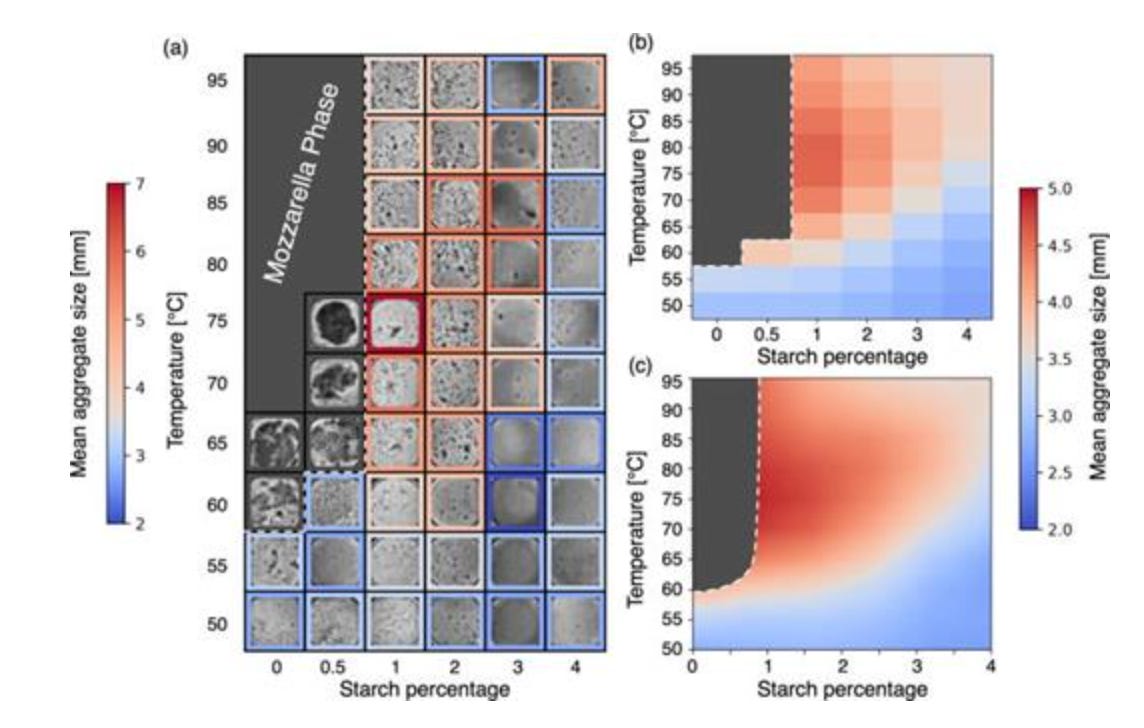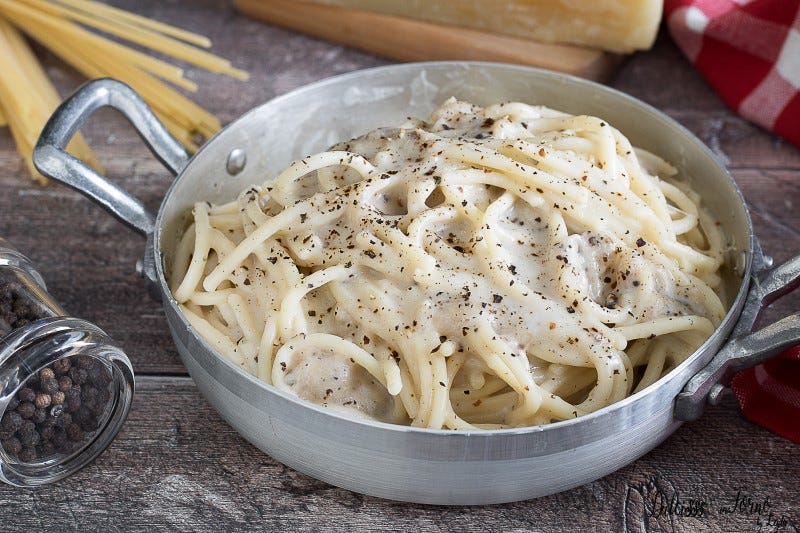Physics and Italian pasta
How Italian physicists used phase diagrams and thermodynamics to crack the code of the perfect recipe for cacio e pepe pasta.
Today I’m helping people getting better at cooking one of the simplest Italian dishes.
In Getting Better I usually share evidence-based insights to grow your career and get better at life (here to read the most popular posts, loved by 4,200+ subscribers).
With this one I’m focusing on the latter: getting better at life. More specifically, getting better at cooking one of the simplest Italian dishes: pasta cacio e pepe.
But I will do it using a scientific paper written by a bunch of very hungry Italian physicists.
Now, you might be wondering: how this will help me get better at life?
Glad you asked.
At least three reasons:
Preparing a meal for someone you care about is one of the most appreciated gestures. It shows thoughtfulness, care, and confidence. If you’ve never cooked for someone, it’s time to change that. After this recipe, you’ll be able to.
People who can cook are also more attractive (applies to all genders)1. If you’re single you can massively increase your chances of finding someone who loves you (even if just for your culinary skills).
You’ll learn how to prepare a classic dish from Italian cuisine - arguably the best in the world. And yes, that’s reason enough. I’m totally unbiased.
Also, fun fact: only 8% of Getting Better subscribers are from Italy. That means 92% of you are tuning in from 127 different countries. So chances are there’s really something new to learn here2.
And let’s be honest: not all Italians know how to cook.
There, I said it.
Let’s start!
Do you know what happens when eight physicists get really frustrated trying to make pasta?
No, they don't give up and order dinner on Doordash.
They spend three months conducting rigorous scientific experiments with phase diagrams, thermodynamic models, and something called the "Mozzarella Phase". And then they publish a scientific paper and a scientific recipe for cacio e pepe, one of Italy's simplest yet most notoriously difficult pasta dishes.
Because simple does not mean easy3.
So, since it’s not easy, let’s deep dive into the insights from the paper.
🧀 The deceptively simple problem
Cacio e pepe literally means "cheese and pepper".
The recipe seems almost insultingly simple:
Cook pasta
Mix hot pasta water with grated pecorino cheese
Add black pepper
Eat
Three ingredients (pasta, cheese and pepper), but infinite ways to screw it up.
The problem?
When you mix hot water with cheese, the proteins clump together, creating what the researchers called the "Mozzarella Phase".
Basically, your creamy sauce turns into stringy, separated chunks that would make any Italian grandmother cry.
🔬 Enter the Avengers Scientists
Instead of accepting this (culinary) frustration, a team of physicists4 at the Max Planck Institute decided to treat cacio e pepe like any other complex system worthy of scientific investigation.
Their approach was methodical, as for every good scientist:
They prepared hundreds of sauce samples with different ratios of cheese, water, and starch.
They photographed each result under controlled lighting.
They measured aggregate sizes using image analysis.
They built actual phase diagrams mapping when sauces stay smooth vs. when they clump.
The result? A complete scientific understanding of why this "simple" dish is so hard to get right.
I always say “simple is not easy”.
It applies in business, in the kitchen, and in life.
📊 The surprising discovery
They found that starch5 is everything.
Not temperature. Not timing. Not the mystical hand movements passed down through generations.
Starch concentration relative to cheese mass.
The magic number? 2-3%

Below 1% starch: Hello! Mozzarella Phase (and a clumpy disaster)
2-3% starch: Perfect creamy sauce every time
Above 4% starch: Sauce becomes stiff and unappetizing as it cools
But here's the kicker: Regular pasta water doesn't contain nearly enough starch.
The traditional method of using pasta water only works if you let it cool down significantly before mixing with cheese, then carefully reheat.
🧠 The real recipe (scientifically optimized)
For 300g pasta (tonnarelli, but also spaghetti is fine) and 200g cheese (a good cacio e pepe for two people), the researchers provide this method:
Dissolve 5g powdered starch in 50g water (our 2.5% starch-to-cheese ratio)
Heat it gently until gelatinized (mixture becomes thick and clear)
Add 100g more water to cool it down
Blend with the cheese
Mix with cooked pasta (“al dente”)
Adjust consistency with reserved pasta water
Add black pepper (previously toasted in a pan to enhance aromas)
The end result will be a sauce that remains stable even when reheated to near-boiling temperatures.
Conclusion
According to the researchers, it should work perfectly every time.
Cooking cacio e pepe won’t get us promoted, help us negotiate a higher salary, or won’t 10x our productivity.
But it will teach us that simple is not easy, and anything done with care, curiosity, and a bit of obsession (and science) can become meaningful.
Try this recipe this week. Invite someone over. Or just cook it for yourself.
Let me know how it turns out.
Buon appetito
See you all on Sundays 🗓️
Thanks,
Giacomo
A recent survey showed that more than 70% of respondents said they find someone more attractive if they know how to cook, and 47% consider it "very important" for a partner to have cooking skills.
If you are curious to learn better, this one newsletter on “how to learn 10x faster according to science” has recently gone viral on Substack, almost doubling its views in 3 days.
It applies in business, in the kitchen, and in life.
Giacomo Bartolucci, Daniel Maria Busiello, Matteo Ciarchi, Alberto Corticelli, Fabrizio Olmeda, Davide Revignas, and Vincenzo Maria Schimmenti.
“Amido” for my Italian readers/chefs. Worldwide, starch is the most common carbohydrate in human diets, and is contained in large amounts in staple foods such as wheat, potatoes, maize (corn), and rice.







Now do Pasta all'amatriciana please 😂
Yum! I love cacio pepe pasta, now I will have to try making this! :)